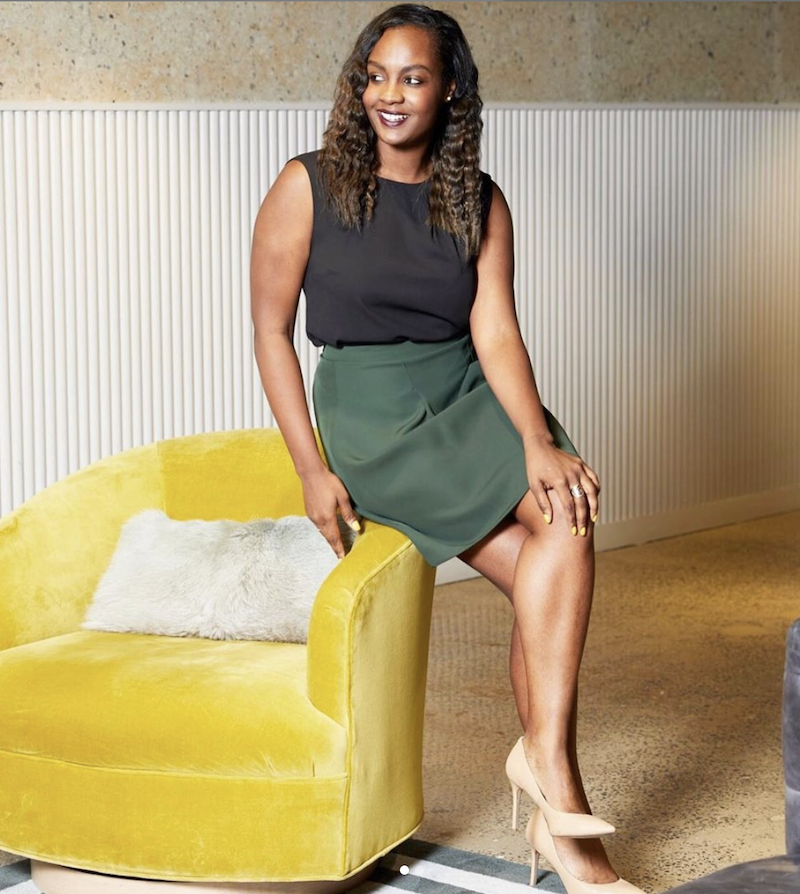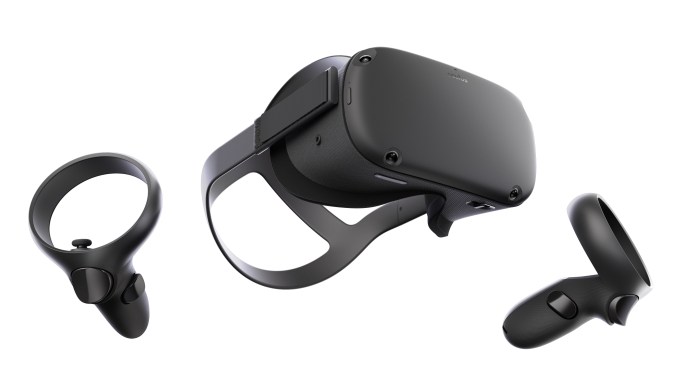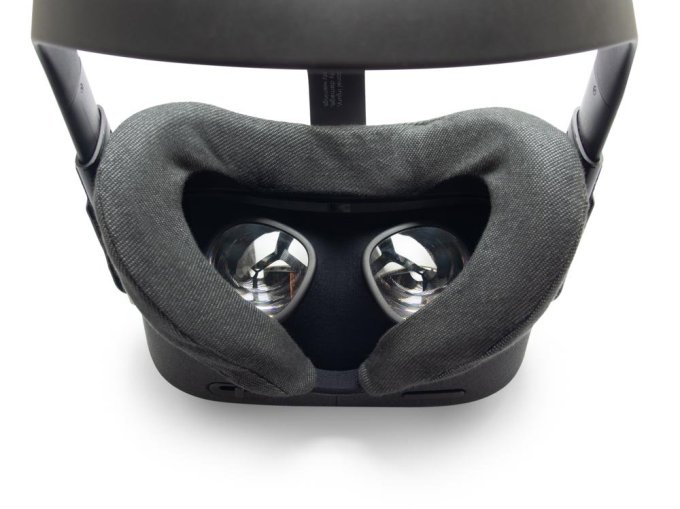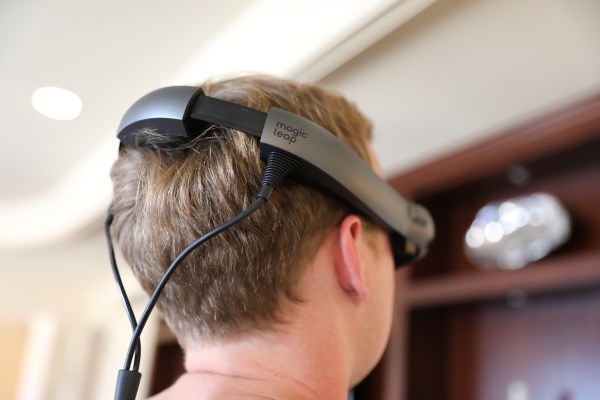Technology

Four years ago when I founded Winnie, I set out to build a different kind of startup. Above and beyond any success our business achieved, it was most important to me that we create a culture where people would want to work. As a new mom at the time, I intentionally decided to build a company where employees would not work on nights or weekends, where there was flexibility for employees to manage their lives outside of the office, where motherhood would no longer be a penalty but a bonus and where underrepresented groups would be valued and promoted. If we failed because we did those things, so be it.
Four years later, I&m proud of the culture my co-founder Anne Halsall and I have built. As it turns out, treating employees well, valuing their families and personal time and diversifying our team are not only the right things to do, but also competitive advantages.
Even so, I worry that being a woman and taking on the role of co-founder and CEO places a target on my back.
Aggressive. Blunt. Furious. These are words that have been used to criticize the behavior of female CEOs of prominent companies like Thinx, Cleo, Rent the Runway and ThirdLove, to name a few. Away is the latest female-led company to come under fire, in an article in The Verge on Thursday.
First, let me be clear: A toxic work culture is never acceptable. Regardless of who started a company or what kind of stress the company is under, itnever okay to mistreat employees. Some of the things that came to light in these pieces are particularly abhorrent: sexual harassment, lying about onecredentials, creating an unsafe space for underrepresented groups, overworking employees. These are dynamics that need to be called out and eliminated at all companies, whether female or male-led. The Away example is no exception.
But as a female founder and CEO of a growing company, I have to ask: Why does it seem like so many of the toxic companies in the news are founded and led by women? The number of major public corporations led by female CEOs is less than 5%, and of the 134 U.S.-based unicorns, only 14 even have a woman with a co-founder title.
For such a small fraction of female-led companies, the amount of negative press female CEOs receive is glaringly disproportionate. I have a couple of ideas why.
First, while much of what is revealed in these reports is disgusting, what also comes through is the stereotype of women leaders as &bitches.& Articles often highlight when female CEOs curse, yell and show anger or bawdiness, because the shock value is higher than when male CEOs demonstrate these behaviors. We ask women leaders not only to be successful, but also to be ladylike and likable. I have lost count of the number of times I&ve been criticized for not being warm and friendly enough, or saying things that were too blunt.
Second, studies show that when it comes to ethical failures, women are &judged more harshly than men.& The ThirdLove article calls out that &at a by women, for women company& ThirdLovepractice of discouraging salary negotiation was particularly disappointing. Cleolast-minute setup of a motherroom using hanging curtains and a TaskRabbit was described by employees as one of the &more outrageous& behaviors of the founder. As a breastfeeding mom myself, I hate when motherrooms are inadequate, but male-led companies have poor lactation accommodations all the time.
The way we are targeting female founders and CEOs is doing nothing to encourage gender equality. It is only ensuring that the number of female CEOs is dwindling under the pressure of having to live up to stricter standards than men. So what can each of us do to create a more fair and accurate picture?
Reporters should continue to hold companies accountable, but just seek stories of male CEOs in equal proportion to the number of male-led companies out there. Those stories are there and only a few of the very worst examples have been exposed. Lethave it take much less time to expose the next Travis Kalanick or Adam Neumann.
As readers, it is also worth being aware of our own biases. We can ask ourselves if we&re more outraged at a behavior because it comes from a woman, and if there are men we&re allowing to go unscrutinized. We can ask ourselves if maybe we enjoy seeing successful women taken down a notch (I certainly hope the answer is no).
I will continue to implement a healthy work environment at Winnie, grow a company where my employees can thrive and hold myself to the highest standards of conduct. But as we continue to take down the already few female CEOs one by one, I can only hope that what I do will be enough.
- Details
- Category: Technology
Read more: The inevitable takedown of the female CEO
Write comment (97 Comments)With less than two months left in the decade, advertising is again entering a new phase of rapid expansion with customer experience front and center.
The explosion of data and identity management, combined with technical advancements in real-time signal detection and machine learning, present new opportunities to respond to consumers, but mastering this ability enables marketers to create &magic moments& — instances of hyper-relevant content, delivered at the perfect time and place.
We&ll see evolutions on the back end in terms of delivery and measurement — as well as on the consumer-facing end — through new creative deployments that enhance the brick-and-mortar shopping trip. Marketers will be held to a higher standard, both by clients demanding world-class performance and proof, as well as consumers who want relevancy, helpfulness and privacy from their brand relationships.
Achieving this balance won&t be an easy task, but the most progressive marketers will succeed in driving this industry toward a more customer-centric future because they took steps to evolve before it was too late. With that in mind, here are five ways we expect advertising to become more holistic in the 2020s:
Smart data will take priority over big data
Most marketers have heard the adage, &garbage in, garbage out.& For too long, the industry relied on sheer quantity of data with no quality metrics for making key audience assumptions. This mentality has had a detrimental effect on our industry, creating an ecosystem where people simply hate ads and brands focus on viewability over ROI.
To truly understand our audiences, we must first turn data from multi-channel interactions into smart, actionable insights. This involves not only understanding who the customer is, but what motivates them.
Progressive marketers will continue to invest heavily in identity graphs to tie critical data and behaviors to individual profiles across channels. Using data science and machine learning, marketers will then be able to advance their knowledge about consumers to new levels, employing new messaging tactics based not only on value, but also on what inspires action. Key nuances, like distinguishing a deal-seeker from a value-seeker, will lead to more engaging personalized experiences and ultimately better ROI for advertisers.
We&ll see a flurry of investment in real-time engagement
We live in a world where our technology predicts where we are going, what we are seeking and how long it will take to get there by recognizing our patterns and everyday behaviors. The benefits in terms of convenience and knowledge are addictive. Look no further than email, social and Alexa to see how real-time awareness and time savings from these interactions impact our everyday lives.
For marketers, capturing this lightning in a bottle has always been elusive — until now. The rise of real-time advertising, customer data platforms (CDPs), data science and machine learning have created the ability to detect purchases as well as online and real world location signals in real-time. This enables marketers to not only predict the next shopping trip, but what a consumer is likely to buy, when it matters most.
These sense-and-respond capabilities will enable progressive marketers to create experiences of enormous value at the moments that matter, such as triggering an offer of relevance upon entering a store or delivering a tailored experience at a specific time and location. The new decade will bring about massive investments into these technologies given their immediate ability to influence consumers during the actual purchase process. We&ll see budgets being specifically carved out to support real-time advertising and technologies as marketers optimize and convert users with greater effectiveness.
For consumers, it means that the in-store experience will continue to become more interactive, with mobile devices as the connecting point between e-commerce and brick and mortar. Brands that thrive in this environment will win by delivering meaningful creative that connects both online and offline worlds in a helpful and relevant way.
Cutting-edge tech will create new ad experiences
- Details
- Category: Technology
Read more: Will the 2020s be online advertising’s holistic decade
Write comment (94 Comments)As the world grows increasingly digital, the craving for face-to-face connections is surging. Squad, an invite-only community and app, is trying to fill the need for offline connections by curating tight-knit events for Gen Z and Millennials.
&It mimics building relationships in real life,& says founder and CEO Isa Watson.
Itan idea that investors are already backing: Squad closed a $3.5 million seed round and plans to raise its Series A in early 2020, but the road to securing that round was anything but easy. During a conversation on the How I Raised It podcast, Watson shared the ups and downs of her unique path to fundraising.
Establish credibility for a few years before fundraising
She started by putting some of the earliest capital into the business herself with support from her family. She then worked her way through more than 200 meetings in Silicon Valley to build up her credibility as a founder — a step that she can&t stress enough — before Squad even started its official seed round.
&Despite the fact that I went to MIT, despite the fact that I managed a billion-dollar product at JPMorgan Chase and even built a huge digital product, I was still a Silicon Valley outsider,& Watson says.
People sometimes have the perception that being an alumni at a top U.S. university will mean they can go to Silicon Valley and just be &in,& Watson explains, but thatnot quite how it works.
&It takes a lot of work and a lot of credibility building,& she says. &Thatwhat I was doing for a few years before we actually did our official seed round. By the time I did it, it was like my reputation preceded me and there was enough familiarity with me.&

Isa Watson, Squad founder and CEO
Don&t do the cold outreach thing — warm introductions only
Despite taking more than 200 meetings in her efforts to crack Silicon Valley, Watson never took a cold meeting.
&Cold outreach is a tactic that I see a lot of founders using,& she says, &whereas I would argue that the more effective introduction comes from someone who knows someone.&
Leveraging the connections she built was critical in connecting Watson to her eventual funders. &They&re all referring you to the next three people to talk to,& Watson says. &It becomes like tree branches and then a network thatgrowing in a multiplicative fashion.&
One of Squadearliest investors was Steven Aldrich, who at the time was working as chief product officer at GoDaddy . Both Aldrich and Watson grew up in North Carolina, and Stevenfather shared hometown roots with her, which helped her make the initial connection.
&It was about consistently making connections like that,& she says. &Steven introduced me to three people, and then those three other people introduced me to two people. And thatessentially how I got the ball rolling.&
Not all meetings need to be about meeting for coffees or lunches, either — Watson took plenty of calls while expanding her network, as well. But the important step was making those connections, which was &a really hard hustle and grind, head down,& for the first two years.
Be really specific when asking for advice
When meeting people in Silicon Valley or expanding her network of prospective funders, Watson didn&t tease future funding rounds or send off vague meeting requests.
In trying to build out her network, she first researched a couple of key things: who did she need to know in order to build a really strong product, and who did she need to know in order to have solid distribution or growth marketing? Once she identified those folks, she would reach out to them individually and ask them for specific advice in their area of expertise.
&People always say, ‘When you want money, ask for advice. If you want advice, ask for money,&& Watson says. &Being super-explicit in the ask and explaining how you&ll spend their time and their brain space is super important.& No one has time for a generic request like, &Hey, can I pick your brain?&
When you&ve connected with someone, you should always ask them for recommendations for experts in specific areas — like growth marketing, product, etc. If they volunteer a few names, ask if you can send an email that they could forward on to introduce you to those individuals.
Following the introductions, itimportant to remember that itnot just a &one and done,& as she says. Once you&ve met with someone through an introduction, follow up: let them know how the meetings went and thank them again.
&Itlike really, really intense relationship management, and itsomething that people with the highest EQ do best,& says Watson. &I would identify my needs, make specific asks … and then I would make sure to explicitly ask if they did not offer for three other intros for people that could be helpful, that would be excited about what we&re doing.&
Secret weapon: your fundraising quarterback
When she realized it was time to start raising money for Squad, her first move was to identify her &quarterback for fundraising& — in this case, Charles Hudson from Precursor Ventures. Ithelpful, according to Watson, to not have &too many cooks in the kitchen,& or else you&ll end up with far too many opinions that don&t align.
Hudson had already invested a small amount of money in Squad at the time, but he quickly became the person Watson went to for feedback on her pitches. He counseled her on other aspects of running a process.
&One thing Charles tells me is that, with fundraising, you&re likely only going to be successful if thatyour core focus at that time,& Watson says. &Itnot something you can do passively.&
So Hudson and Watson sat down and came up with a list of 35 target venture capitalists. He introduced her to five who she didn&t expect to be a good fit. They first went with the ones they didn&t expect would be a perfect match so she could gather feedback and see if Squad was actually ready to raise capital.
Of those first five meetings, one or two &were complete dings& and turned Squad down outright — but Watson made it to partner meetings in the three other meetings, a sign that VCs were seriously considering Squad.
Based on that feedback, Hudson introduced Watson to 10 more VCs — and shortly after, she met Michael Dearing at Harrison Metal, who led Squadseed round.
Choose your seed funders carefully
After Dearing offered up a term sheet of $3 million, Watson quickly had offers from other VCs.
&Itfunny because it took me deliberately being in the market for fundraising for like two and a half months to get that ‘yes& from Michael. Before that, I had no cash really committed,& she says. &And then after just a few days of letting people know I had a term sheet for $3 million, I had like $6 million on a table. VCs are such followers.&
With that many offers on the table following Dearinglead, Watson was in the enviable position of needing to pick who she&d let into the seed round. So how did she choose?
&The first thing is value add,& Watson says. She asked herself: &did I feel like I had the right assortment of value? I maybe want someone in there whoreally strong on product; I may want someone whoreally strong at growth, strong at marketing.&
Her second criteria for making the decision was a less resume-focused. Simply put, she went with her gut.
&One thing that founders really, really underestimate is — is this person a good human being? I went with the people that I had felt most comfortable with, the people who I felt I could trust based on my interactions with them, and who were just supportive along the way.&
- Details
- Category: Technology
Read more: Raising VC in Silicon Valley as a female POC
Write comment (93 Comments)The Daily Crunch is TechCrunchroundup of our biggest and most important stories. If you&d like to get this delivered to your inbox every day at around 9am Pacific, you can subscribe here.
1. Uber reveals thousands of sexual assault reports last year
Uber just released its first-ever safety report, stating that it received 2,936 reports pertaining to sexual assault in 2017, which went up to 3,045 in 2018 (these are U.S.-specific numbers). At the same time, Uber says there was a 16% decrease in the average incident rate.
While traditional taxis also have their safety risks, those numbers are still quite troubling. Itworth noting, though, thatthe company has implemented some safety measures designed to help prevent sexual assault.
2. Niantic is working with Qualcomm on augmented reality glasses
To be clear, you&re not going to be booting up Pokémon GO on a pair of Qualcomm/Niantic AR glasses this Christmas. Moving forward, though, Niantic will be working with Qualcomm to flesh out the reference hardware for augmented reality glasses.
3. Netflix earmarks $420M to fight Disney in India
&This year and next year, we plan to spend about Rs 3,000 crores developing and licensing content and you will start to see a lot of stuff hit the screens,& said CEO Reed Hastings at a conference in New Delhi.
4. Airbnb officially bans all open-invite parties and events
The new policy seeks to prevent certain guests from hosting events not approved by hosts — such as a recent Halloween party hosted at a California Airbnb rental in which five people were killed.
5. Inside VSCO, a Gen Z-approved photo-sharing app, with CEO Joel Flory
Known to many only because of this year&VSCO girl& meme explosion, the company has long been coaxing the creative community to its freemium platform. Turns out, if you can provide the disillusioned teens of Gen Z respite from the horrors of social media — they&ll pay money for it.
6. This Lego Cybertruck is one even Elon can love
While Legotake on the Tesla Cybertruck design seemed to be purely for the LOLs, a remarkably faithful representation has been submitted to the official Lego Ideas crowdsourcing website.
7. Scammers peddling Islamophobic clickbait is business as usual at Facebook
A network of scammers used a ring of established right-wing Facebook pages to stoke Islamophobia and make a quick buck in the process, according to a new report from The Guardian. But Devin Coldewey argues that this is less a vast international conspiracy and simply more evidence that Facebook is unable to police its platform to prevent even the most elementary scams. (Extra Crunch membership required.)

- Details
- Category: Technology
Read more: Daily Crunch: Uber reveals sexual assault numbers
Write comment (94 Comments)Welcome to TechCrunch2019 Holiday Gift Guide! Need help with gift ideas? We&re here to help! We&ll be rolling out gift guides from now through the end of December.You can find our other guides right here.
There have been holiday gift guides for VR for the past five years or so, and, for most of that time, buying a VR headset was generally a bad call.
There were still fun experiences to be had, but the gear was expensive and the troubleshooting was not for the faint of heart. I&ve played around with most of the gear thatout there; honestly, most of it isn&t ready for consumers, but if theresomeone in your life dying to get into VR, here are some earnest recommendations.
This article contains links to affiliate partners where available. When you buy through these links, TechCrunch may earn an affiliate commission.
The best headset for 99.5% of people

This year, Facebook released the Oculus Quest for $399 and, honestly, itthe only headset made by Oculus or anyone else that I&ve been able to give a full-throated recommendation. Setup and upkeep are both simple and benefited by its standalone mobile form factor — this one just works by itself, no PC required. Therea worthy amount of content for something in its price range and itoverall not a purchase you&ll feel dumb later for making.
Is $399 a little steep for a Christmas present? Obviously thatunderstandable, but I would honestly just not go for a VR gift if thatthe case. Most VR gear below this price point is relatively clunky (with the caveat that for PlayStation owners, the PlayStation VR is still a great deal… though I think I&d still recommend the Quest if you&re willing to drop the extra money. Itjust such an easy system to love.)
Price: $399 from Oculus
To help you see better: prescription inserts

All of Oculusnew headsets have a good amount of space in the headset to accommodate users that wear glasses, but if you&re the main person using the headset, ita lot more comfortable to just get prescription inserts made. Ita little extreme, sure, but comfort is a big deal in VR, so you won&t regret it if you&re already logging some decent mileage on your headset.
Price: $80 from FramesDirect
To help you be less gross: VR Cover

If you&re using your VR device as a device to get you moving and you&re regularly sweating while playing some of the more intense titles, I guarantee that headset is getting pretty nasty. VR Cover has been making masks that cover up the section your face touching the headset, and they&re pretty decent quality and available for most popular headsets. These are great if you&re a bit sweaty or are regularly showing friends your new headset.
Price: $19 on Amazon
To help you get mobile: carrying case

The Quest is a portable console, but that doesn&t mean you just want to toss it into your bag without any cares. It still is rather sensitive, and if you scratch the lenses or tracking cameras, you are probably in for a bad time. The first-party Oculus Quest case is a pretty solid purchase, with room for your headset and controllers, but not much else.
Price: $40 on Amazon
To help you get immersed: some solid wired headphones

If you&re the owner of a new Quest, Go or Rift S, you also will probably want to be the owner of some decent wired headphones. The stereo speakers embedded in the headsets are good in a pinch, but your experience is going to be a lot better with some decent headphones, and the Quest doesn&t allow for Bluetooth headsets, so, sorry, no AirPods.
There are two schools of thought for which headphones are best for VR, ones that cut you off completely or ones that let you hear whatgoing on a bit so that you&re at least somewhat aware of your surroundings. But be reasonable, you shouldn&t be basing your headphones purchase on what works for VR, so get some noise-cancelling headphones you&d also want while you&re traveling or some on-ear headphones you&d also use for at-home listening.
I&m a big fan of Grado headphones even though they aren&t all that comfortable for long sessions, but you can&t go wrong with an $80 pair of Grado SR60e headphones. I never miss a chance to recommend them. I&ve always been a Bose user when it comes to noise-cancelling headphones, but I also haven&t owned many pairs, and I know most audiophiles will point you in Sonydirection, so maybe a classic pair like their WH-1000XM3 will do (though remember, you&ll have to use the included wire with most VR headsets.)
Price: Grado SR60e (Wired), $80 on Amazon | Sony WH-1000XM3 (Wireless), $278 on Amazon
The best headset for die-hards

If the best headset for 99.5% of people is the Oculus Quest, for the rest itthe Valve Index. The PC headset is about as high-end as you would reasonably want as a consumer, though you are still definitely investing in a more complicated solution than the Quest. No other products on the market have the well-thought-out feature set that the Index does. Itless approachable, but its feature set screams high-end even if most VR games can&t make the most of what it offers. For PC gamers, there aren&t many good choices out there these days, but if you&re going to take a step beyond the Quest, you should get the Index (though itworth noting this is on pretty hefty back-order and won&t ship pre-Christmas.)
Price:$999 from Valve
- Details
- Category: Technology
Read more: Gift Guide: VR gear you won’t feel stupid for buying
Write comment (98 Comments)
Magic Leap just announced that they&re in the midst of closing a Series E round of funding, but it sounds like they&re going to have to clinch that investment with some pretty troubling sales numbers for their only device on the market.
The Information‘s Alex Heath is reporting that Magic Leap managed to sell just 6,000 units of its $2,300 Magic Leap One headset in its first six months on sale, a figure made worse by CEO Rony Abovitzinternal claims that he wanted the startup to sell at least one million units of the device in the first year, a goal the report states he was later convinced to rethink — Abovitz later projected the company would sell 100,000 units in the first year.
We reached out to the company for comment.
Given the companylong much-hyped road to the release of the Magic Leap One, such low early reported sales are anything but encouraging for their ultimate goals of building a pair of augmented reality glasses that can rival the efforts of Apple and Microsoft. There aren&t many sales figures out there being shared for existing AR headsets on the market, but Magic Leap has also raised and spent more than any other startup to release their first device.
The company has now raised around $2.6 billion in venture funding from firms like Google, Alibaba and a slew of other investors. The story also reports that Google — and now Alphabet — CEO Sundar Pichai stepped down from the board and was replaced by another Google executive.
- Details
- Category: Technology
Read more: Report: Magic Leap’s early device sales aren’t looking good
Write comment (92 Comments)Page 177 of 5614

 15
15